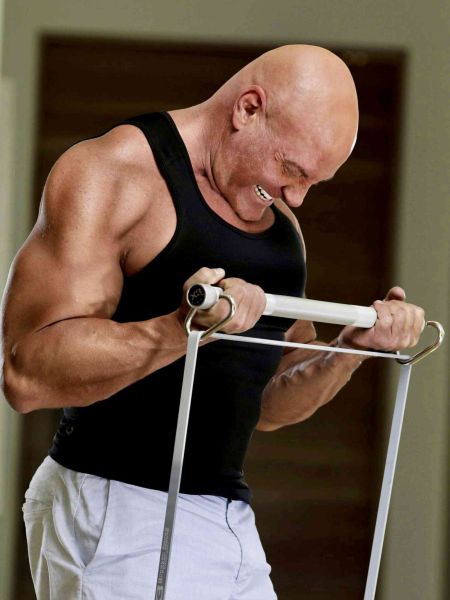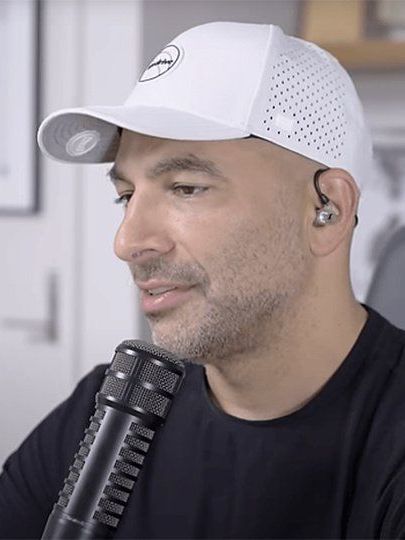Creating a Caloric Deficit to Reduce Body Fat
Finding your metabolic balance.
If you're looking to effectively reduce body fat, creating a caloric deficit can help you achieve this. It forces your body to use stored energy (fat) for fuel. Sounds easy enough, eat fewer calories than you burn, right? Easy peasy!
In the real world though, this simple concept can quickly spiral away from you causing you to abandon your plan and maybe overcompensate, putting you in worse shape than you started from.
Let's tackle a caloric deficit with the right stuff. To be effective you need to have an idea of what's happening in your body, why you're gonna feel the way you feel, and how to develop a plan that's sustainable for you!
Understanding Energy balance
Your body needs a certain amount of energy to function daily. These calories are used for basic bodily functions, physical activity, and digestion.
Caloric surplus vs. deficit
If you consume more calories than your body needs, the caloric surplus leads to the excess energy being stored as fat and can cause weight gain.
If you consume fewer calories than your body needs, it creates an energy deficit. To compensate, your body starts breaking down stored fat for energy, resulting in fat loss.
Fat as stored energy
Fat is your body's primary energy storage. When you create a calorie deficit, your body taps into these fat stores to make up for the lack of incoming energy from food.
Creating a deficit
You can create a calorie deficit in the following ways:
Eating less: Reducing your food intake to consume fewer calories.
Exercising more: Increasing your physical activity to burn more calories.
Combining both: A combination of both dietary changes and increased exercise is often the most effective approach.
It's important to ensure you create a caloric deficit in a safe and sustainable way. This can be done by taking into account the following factors:
Healthy deficit: A safe and sustainable calorie deficit is typically 500-1000 calories per day. Drastically cutting calories can be harmful and lead to nutrient deficiencies, muscle loss, and slowed metabolism.
Individual needs: Calorie needs vary depending on age, gender, weight, activity level, and other factors. It's important to determine your individual needs to create an appropriate calorie deficit.
Nutrient-dense foods: Focus on consuming nutrient-dense foods like fruits, vegetables, whole grains, and lean protein to ensure you're getting essential nutrients while in a calorie deficit.
There is a lot to learn about calorie restriction, and the work being done by health and wellness experts is backed by scientific research and practical experience.
Now that you've got the basics, let's tap into some expert info and dive deeper!
In these interviews, Drs. Layne Norton and Peter Attia share their best advice on creating a caloric deficit to reduce fat based on the science of nutrition.
Below you'll find a few highlights:
Strategies for calorie restriction
There are a few strategies bodybuilders use for appetite suppression and calorie restriction. Bear in mind, these methods don't always go hand-in-hand with a healthy diet, but they can be useful for achieving extreme leanness.
-
Diet soda: Diet soda can be a useful tool for calorie restriction, especially for individuals with a sweet tooth. Choosing diet soda over calorie-rich desserts can help you manage cravings while minimizing calorie intake.
-
Maintaining food volume: It's important to feel satiated and satisfied while in a calorie deficit. One way to achieve this is by maintaining the volume of food on your plate while opting for lower-calorie alternatives (i.e., instead of a 6oz portion of ground beef, choose a 6oz portion of lean chicken breast to significantly reduce calorie intake without sacrificing protein content). Similarly, switching to fat-free Greek yogurt from full-fat can save calories while still providing a similar volume of food.
-
Protein intake: Protein intake is especially important for bodybuilders. There are several ways to incorporate lean protein sources into your diet:
- Lean chicken breast: This is a classic choice for bodybuilders due to its high protein and low-fat content.
- Egg whites: While whole eggs are nutritious, egg whites offer a lower-calorie alternative while still providing protein.
- Wild game: Wild game is often lower in fat than conventionally raised meats.
-
Wild game: Hunting can be a budget-friendly way to incorporate lean protein. Wild game, like venison or elk, can be a healthier option due to the animals' natural diet and lack of stress compared to farmed animals.
Adhering to a low-calorie diet
It can be challenging to stick to a low-calorie diet. It can be especially difficult for bodybuilders who may need to consume under 1,500 calories to achieve stage-ready leanness.
Two strategies can help you cope with this challenge:
Eating voluminous foods: Choosing foods that are high in fiber, low in energy density, and filling, like salads and vegetables, can help manage hunger and promote adherence to a low-calorie diet.
Time-restricted feeding: Eating all meals within a smaller time window (e.g., 8 hours) can allow for larger, more satisfying meals, potentially improving adherence to a low-calorie diet for some individuals. This approach may not work for everyone.
Implementing a deficit safely
By understanding how a caloric deficit works and implementing it safely and effectively, you can achieve sustainable fat loss and improve your overall health.
Working with a registered dietitian or certified nutritionist can provide personalized guidance tailored to your individual needs and goals.
They can help you create a safe and effective calorie deficit plan to support your fat-loss journey.





